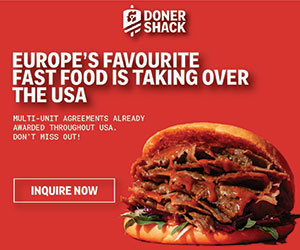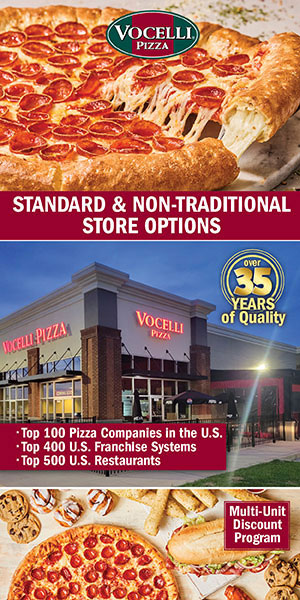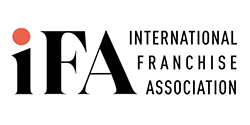Weigh Drive-Thru Investments Against Customer Expectations, Competitive Landscape

The drive-thru has provided a lifeline for many QSR operators during the pandemic — a distinct competitive advantage that has allowed many brands to compensate for sales volumes lost through the sharp decline in in-store dining.
Although improving the drive-thru has long been a focus of the nation’s largest quick-service chains, it has taken on increased importance as these companies plan for an uncertain future that may include ongoing consumer interest in off-premises consumption. Many operators have outlined plans to expand their drive-thru capacity and to upgrade their capabilities to include dedicated mobile order pickup lanes and other enhancements.
Before operators make such capital expenditures, however, they need to carefully assess their current drive-thru operations within the context of the overall competitive landscape. The 2020 SeeLevel HX Annual Drive-Thru Study offers a comparative view of drive-thru performance that, when combined with information operators already have about their own customers and their own brands, can become a roadmap to building a drive-thru strategy that optimizes the return on these investments.
Every brand cannot be everything to every customer. For some operators, speed of service in the drive-thru may be paramount. For others, food quality and freshness take precedence.
Chick-fil-A, for example, illustrates how a brand can excel at matching the drive-thru experience to customers’ expectations about the brand. While the Atlanta-based chicken sandwich chain is a perennial last-place finisher in SeeLevel HX’s research when it comes to speed of service in the drive-thru, that doesn’t deter its many true fans who know they are going to get a high-quality chicken sandwich at the end of their wait.
The chain ranked first in three other metrics — accuracy, service, and taste — in both this year’s and last year’s report, which more than compensates for its lack of speed. In addition, Chick-fil-A seeks to minimize the impact of the relatively long waits in its drive-thru by sending workers out into the line to take orders. This also serves to augment the brand’s reputation for high levels of service.
For other operators, speed may represent a more critical attribute. SeeLevel HX’s research shows that sales lost through slow service in the drive-thru can add up to tens of thousands of dollars per year per store, and service times have been slowing during the past several years. The average drive-thru time for the group of brands studied for this year’s report increased by nearly 30 seconds, compared with last year.
Our mystery shoppers also found that speed of service was one of the areas most in need of improvement. More than a quarter (26.2%) of drive-thru visits this year resulted in shoppers citing speed as the area most in need of improvement, ahead of customer service at 16%, and food quality at 14.6%.
That may represent an opportunity for operators to gain an edge on competitors by investing in tools that improve drive-thru speed. These tools include suggestive selling and pre-sell and digital menu boards, and may also include efficiencies in the kitchen such as streamlined menus that help decrease order production times.
Order accuracy is another contributor to speed of service that operators may choose to address with investments such as upgraded speaker systems, self-ordering kiosks, or digital order confirmation. This year, the report found that order confirmation boards, for example, correlated with speedier drive-thru service, as operators using order confirmation boards had total drive-thru service times 28.1 seconds faster than those without that technology. That translates to an estimated $28,170.70 in potential lost sales per store for the more sluggish operators.
Other investments operators have been considering include adding drive-thru lanes, automating all or part of the drive-thru, adding ordering kiosks, using location-based solutions to drive sales and improve service, and boosting service by dedicating more staff to the drive-thru, as Chick-fil-A does with its outside order-takers.
Some of those may represent significant investments, and should be tested on a limited basis using mystery shoppers to determine if they drive the intended returns.
Operators also need to consider their drive-thru performance relative to that of their direct competitors. The fastest burger chain might not need to invest as much in improving speed as the slowest, and can instead consider enhancing other attributes that are also important to its customers and its brand.
Once operators are confident that they have achieved high performance levels in the areas of their drive-thru that reflect the brand’s core attributes, they can incorporate it into their marketing and communications strategies.
The 2020 study, which included 1,490 drive-thru visits across 10 major brands, provides benchmarks operators can use for comparison against each other and against past years’ performances to gauge improvements over time and to inform strategic decisions about future investments. This year’s research, conducted from June through August, also includes Covid-related data, such as the use of gloves, masks, and plastic barriers, as well as the degree of contactless interactions by each brand.
The careful allocation of investments for future success is more important than ever for restaurant operators. Brands need to understand the needs of their customers and the potential competitive benefits they might gain from any capital they expend to expand or improve their drive-thru operations.
Lisa van Kesteren is CEO of SeeLevel HX, a leader in mystery shopping and customer estudy highlights, or to order the complete study, click here.
Share this Feature
Recommended Reading:
| ADVERTISE | SPONSORED CONTENT |
FRANCHISE TOPICS
- Multi-Unit Franchising
- Get Started in Franchising
- Franchise Growth
- Franchise Operations
- Open New Units
- Franchise Leadership
- Franchise Marketing
- Technology
- Franchise Law
- Franchise Awards
- Franchise Rankings
- Franchise Trends
- Franchise Development
- Featured Franchise Stories
| ADVERTISE | SPONSORED CONTENT |








 The franchise listed above are not related to or endorsed by Franchise Update or Franchise Update Media Group. We are not engaged in, supporting, or endorsing any specific franchise, business opportunity, company or individual. No statement in this site is to be construed as a recommendation. We encourage prospective franchise buyers to perform extensive due diligence when considering a franchise opportunity.
The franchise listed above are not related to or endorsed by Franchise Update or Franchise Update Media Group. We are not engaged in, supporting, or endorsing any specific franchise, business opportunity, company or individual. No statement in this site is to be construed as a recommendation. We encourage prospective franchise buyers to perform extensive due diligence when considering a franchise opportunity.